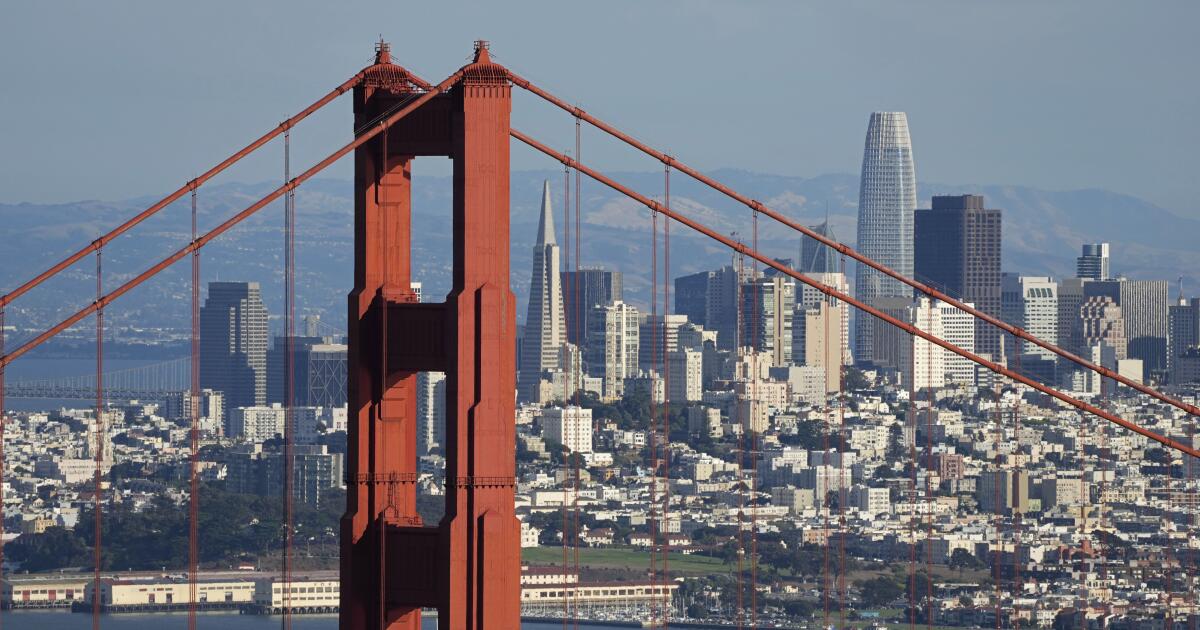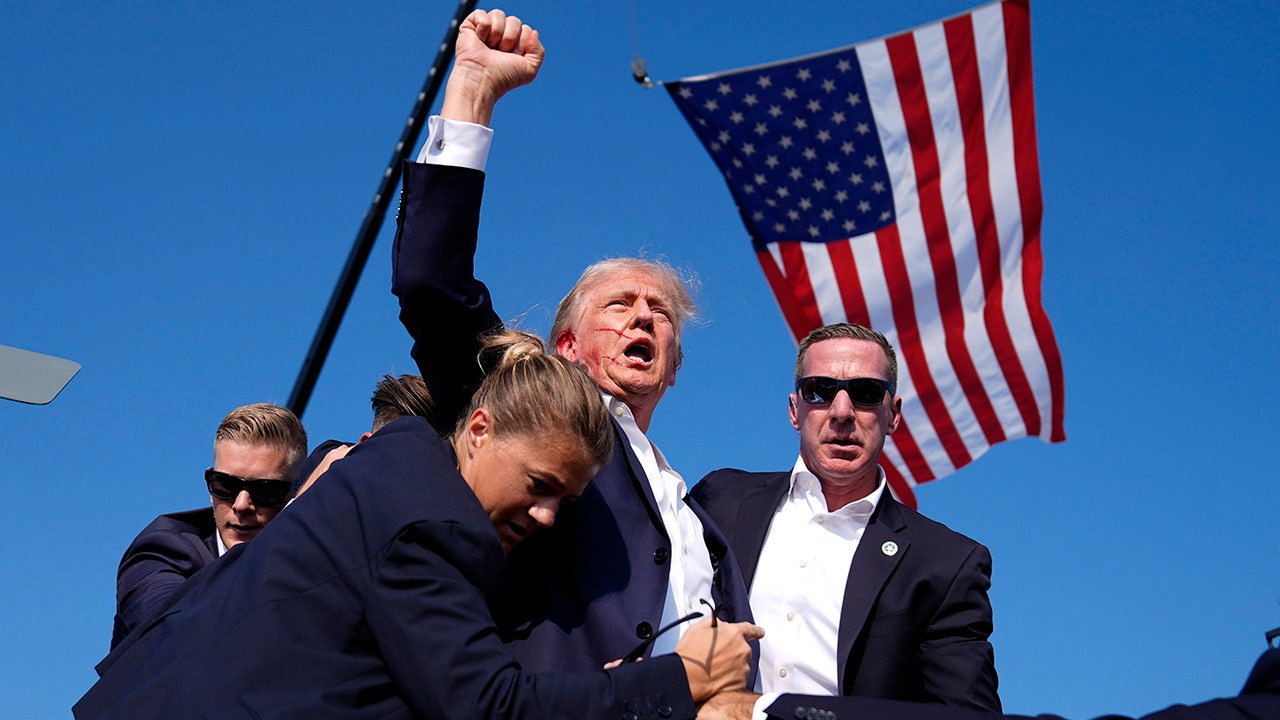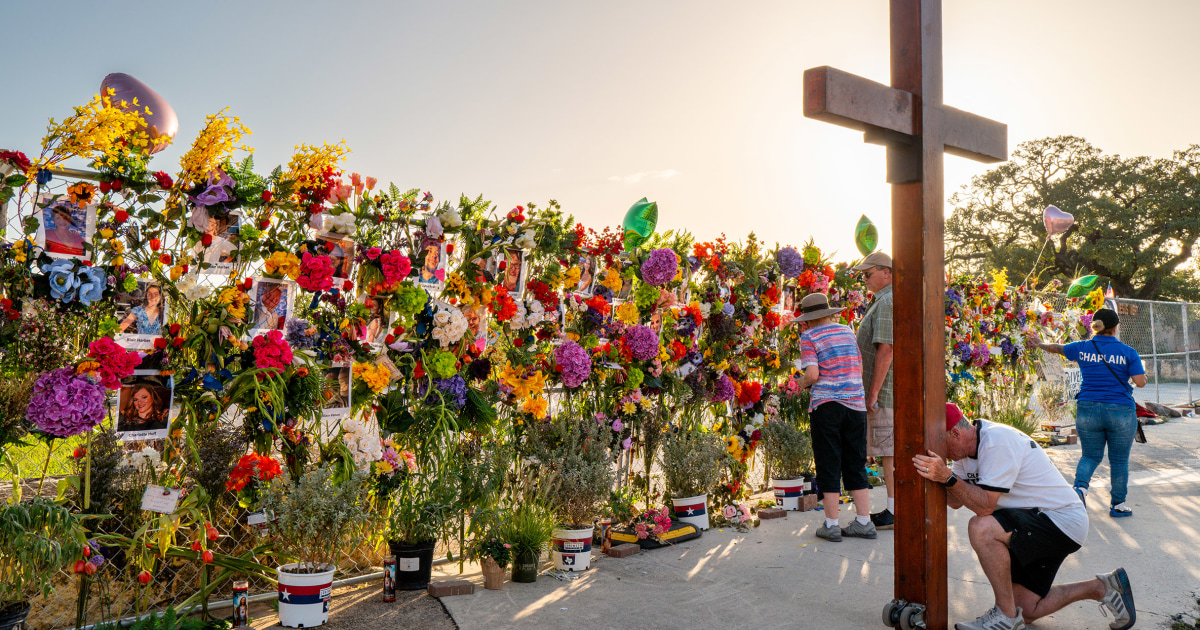Business
Opinion: Can a four-day workweek really work? Many companies have already learned the answer

In 1940, Congress amended the Fair Labor Standards Act to limit the standard workweek to 40 hours, with any additional hours eligible for overtime. Despite a more than threefold increase in productivity since, the 40-hour week has remained unchanged for 83 years.
But it may be changing at last. 2023 could just be the year of the four-day, 32-hour week.
Over the first few months of the year, Google searches for information about the four-day week rose by a factor of five. The media have produced hundreds of stories on companies that are offering 32-hour schedules. California and other states have considered legislation to enact or study a four-day week, and Riverside Rep. Mark Takano has introduced a bill on the subject in Congress.
In Europe, national and regional governments have pilot four-day week programs in progress, and the United Arab Emirates has shifted public-sector employees to a 4 ½-day schedule. In February, we released findings from the world’s largest trial of a four-day week with no reduction in pay, involving some 60 organizations in Britain across a range of sectors from public relations to healthcare to manufacturing. The results were striking: Employees and companies using the new schedule are thriving.
Why are reduced working hours suddenly on the agenda after years of not being taken seriously? The most important reason is the pandemic.
Leaders of the first organization to be part of our research attributed their decision to the COVID-driven shift to remote work. Dr. Adam Husney, the chief executive of the health information firm Healthwise, explained: “Once we realized we could trust our employees with where they work, we also realized we could trust them about how much time they work.”
Before the pandemic, there was a lot of talk about paying people for their output rather than their hours, but organizations honored the principle mostly in the breach. Once people are off-site, however, paying for productivity rather than time makes more sense, as least for employees who aren’t subject to draconian surveillance measures.
The pandemic also turbo-charged the four-day week by creating much more hardship for workers. While the work-life interface was difficult to navigate before COVID, the contagion itself and the complications of merging work and family life led to record levels of stress. The latest published research from Future Forum, based on a 2022 survey, found that 42% of employees polled in the United States and five other countries said they were burned out, a 4-percentage-point increase compared with just a year earlier.
Workers are responding with their feet. For Healthwise’s Husney, a staff exodus in June 2021 was the impetus for closing on Fridays. The labor market is experiencing not only the so-called Great Resignation — record numbers of people quitting their jobs — but also extremely high numbers of unfilled positions. Organizations are having difficulty retaining workers and scrambling to fill openings.
Raising pay isn’t always enough, and not all organizations can afford to do so. Turnover is also extremely expensive. It’s one reason much of the interest in the four-day workweek is coming from healthcare organizations, where burnout and resignations among nurses have become endemic.
We also think a quieter evolution away from the five-day schedule is underway. Many organizations have already reduced summer schedules by shortening or eliminating Friday hours. No-meeting Fridays have enabled more remote workers to take some of the day for themselves under the radar. We discovered that Friday morning classes at an exercise studio in our area have become very popular, thanks partly to people who reported being “at work.”
Our research suggests that the four-day, 32-hour week is not only feasible; it’s better for workers and employers.
In collaboration with the nonprofit 4 Day Week Global, we’ve been tracking what happens when companies switch to the curtailed schedule with no reduction in pay after a two-month process of figuring out how to maintain productivity and performance. We’ve found that employee well-being is markedly improved. Of more than 100 companies with thousands of workers around the world, nearly 70% experienced reduced rates of burnout.
Stress fell. Reported physical and mental health improved. People felt less anxious and fatigued, exercised more and slept better. Their life satisfaction rose, and conflicts among work, family and life plummeted.
But it’s not just workers who benefited. On a 10-point scale, companies rated the success of the trials at a robust 8.5 or higher. Perhaps the most persuasive metric is that most are opting to continue with the shorter schedule. Only a handful of the organizations that have participated in the trials have reverted to the five-day week.
Many will continue to oppose a shortened work schedule because it sounds un-American or unprofitable. But we’re finding out that modern challenges make the four-day workweek not only possible but better for workers, employers and society.
Juliet Schor is a professor of sociology and Wen Fan is an associate professor of sociology at Boston College.

Business
Commentary: She looked like a pro-worker Trump cabinet appointee. But now she's gutting the Labor Department

You may have detected a cautious note of relief among worker advocates when Donald Trump named Lori Chavez-DeRemer as his secretary of Labor.
During her sole term as a Republican member of Congress from Oregon (2023-25), Chavez-DeRemer was one of only three House Republicans to vote in favor of the so-called PRO Act, which would significantly strengthen collective bargaining rights. The measure passed the House in 2019 and 2021 but has been stifled ever since.
Her nomination and subsequent Senate confirmation elicited optimistic noises from the pro-union camp, as I reported in December.
This is an onslaught on people’s basic protections at work.
— Rebecca Reindel, AFL-CIO
“Her record suggests real support of workers & their right to unionize,” tweeted Randi Weingarten, president of the American Federation of Teachers, when Trump nominated Chavez-DeRemer in November.
AFL-CIO President Liz Shuler said she was “encouraged” by Chavez-DeRemer’s confirmation in March, “given her history of supporting the freedom of workers to organize, join unions and other fundamental values of the labor movement.”
The union leaders tempered their optimism with concerns about the anti-labor policies emanating from the Trump White House: Weingarten said she hoped the appointment signaled that “the Trump administration will actually respect collective bargaining and workers’ voices,” and Shuler said the AFL-CIO was “clear-eyed” that Chavez-DeRemer would be “joining an administration that’s been openly hostile to working people on many fronts in its first two months.”
Can you guess which way the ball has bounced?
On May 1, the Labor Department ordered its staff to cease enforcing a Biden administration rule that had raised the bar preventing businesses from designating their workers as independent contractors instead of employees, depriving those workers of the legal protections and wage and hour benefits typically due employees.
A few days later, Chavez-DeRemer submitted a proposed budget to Congress that would slash her agency’s discretionary funding by more than 35%, to $8.6 billion from $13.2 billion, and cut its workforce by nearly 4,000 full-time workers, a reduction of more than 26%. Among the services to be eliminated would be the Job Corps, which assists low-income youth to complete their high school education and provides job training and placement. (A federal judge in New York has blocked the suspension of Job Corps services and set a hearing for Monday.)
On July 1 came what could be the biggest blow. Chavez-DeRemer announced a plan to rescind 63 regulations that had been designed to help workers. With language that sounds cribbed from the MAGA playbook, she said her goal is to “eliminate unnecessary regulations that stifle growth and limit opportunity.”
She boasted of launching “aggressive deregulatory efforts in push to put the American worker first,” and added that “these historic actions will free Main Street, fuel economic growth and job creation, and give American workers the flexibility they need to build a better future.”
I’ve asked the Labor Department to provide specific rationales for the deregulatory actions but haven’t received a reply.
The effects, however, are clear. “Two-thirds of these have to do with worker health and safety protections,” says Rebecca Reindel of the AFL-CIO. “They’re being proposed to be either eliminated or severely weakened.”
Chavez-DeRemer’s actions as Labor secretary resemble less the image she fostered as a member of Congress than the policymaking of Trump’s first term. Then, as I wrote at the time, the Department of Labor was “a black hole for worker rights.” His second Labor secretary, Eugene Scalia (son of the late Supreme Court Justice Antonin Scalia), had made his name professionally as a corporate lawyer fighting pro-worker government initiatives.
The standards on the chopping block include those issued by the Occupational Safety and Health Administration, a unit of the Labor Department, that were developed after years of effort. OSHA standards, Reindel told me, take an average of seven years — and as long as 20 years — to draft. “This is an onslaught on people’s basic protections at work.”
One category of threatened regulations applies to standards for respirators and filters to screen out workplace pollutants including asbestos, arsenic and lead. The department proposes to eliminate requirements that workers exposed to occupational pollutants be medically evaluated to ensure that their respirators fit properly and don’t cause health problems on their own.
The agency, asserting that such rules are “unnecessarily prescriptive,” proposes to give employers “greater flexibility in the respirators they select for exposed workers.” Removing some of these regulations, Reindel says, “basically would allow employers to make the determination if a respirator is needed for specific chemicals. They’d give employers more flexibility at the expense of workers’ health.”
One of the more potentially far-reaching proposals would narrow the application of OSHA’s “general duty clause,” which requires employers to maintain safe workplaces even when no specific OSHA regulation applies. In the most notable case, OSHA cited the clause in fining SeaWorld of Florida $12,000 in connection with the 2010 killing of trainer Dawn Brancheau by an orca during a performance. SeaWorld sued to overturn the penalty but lost in a 2-1 decision by the federal appeals court in Washington, D.C.
The three-judge panel found that even though the dangers of cavorting with wild animals for a public show were understood, SeaWorld should have done more to protect its human performers. (Who represented SeaWorld in that case? Eugene Scalia.)
The department is proposing to exempt from the rule “professional, athletic, or entertainment occupations” that are intrinsically dangerous. In justifying its proposal, the department cites a dissenting opinion in the appellate case by then-Appeals Judge Brett Kavanaugh, who is now on the Supreme Court.
In his dissent, Kavanaugh maintained that the agency exceeded its Congressional mandate: “The bureaucracy at the U.S. Department of Labor has not traditionally been thought of as the proper body to decide whether to ban fighting in hockey, to prohibit the punt return in football, to regulate the distance between the mound and home plate in baseball, to separate the lions from the tamers at the circus, or the like,” he wrote. The Department of Labor now maintains that Kavanaugh’s analysis, even though it was a minority finding, was right.
More than 115,000 athletes, actors and other entertainers could be affected by the change, the agency acknowledges.
The department also proposes to rescind a 2024 regulation that guaranteed the right of migrant agricultural workers to host union organizers in company-owned housing.
The Biden administration asserted that the regulation was needed to “protect workers’ fundamental rights of association” and observed that the isolation of workers in company-furnished quarters and their “unique vulnerabilities renders them particularly at risk of … workplace abuses, labor exploitation, and trafficking.”
The department, however, cites several court rulings in red states that have held that the regulation was “an infringement on the property rights of employers.” Indeed, that was the reasoning of the Supreme Court in overturning a California law providing for similar access on farm property in 2021.
“The access regulation grants labor organizations a right to invade the growers’ property,” wrote Chief Justice John Roberts for a 6-3 majority, with the court’s three liberal justices dissenting. “It therefore constitutes a per se physical taking” without compensation.
Worker advocates fear that the July 1 announcement is a precursor of more rollbacks to come. “I think the announcement is just the beginning of their deregulation effort,” says Margaret Poydock, a senior policy analyst at the labor-affiliated Economic Policy Institute. “These 63 rules they referenced were just two days’ worth of posting.”
One rulemaking effort that worker advocates are watching closely involves heat-related injuries. A proposed rule was posted in August and is still under consideration, with bipartisan support; public hearings on the rule were completed earlier this month, and final action is expected by the end of September. The Trump administration hasn’t taken any steps to quash it, thus far. But it has been fiercely opposed by business interests.
The U.S. Chamber of Commerce, for instance, submitted a 20-page comment arguing that the proposal “would result in OSHA micromanaging workplaces, imposing unreasonable burdens, and creating confusion as to what employers would be required to do.”
The proposal, which would apply to almost all employers, would be triggered whenever employees were exposed to a heat index — a measure taking into account heat and humidity — of 80 degrees or higher for more than 15 minutes in an hour-long period.
In those conditions, employers would be required to supply cool drinking water, break areas with cooling and paid rest breaks, among other measures. A heat index of 90 degrees would require mandatory rest breaks of 15 minutes every two hours and other heightened measures.
In the absence of a specific federal heat regulation, workplaces are subject to the general duty clause. But that’s inadequate, worker advocates say. “The general duty clause is reactive — it addresses what happens once a worker is already exposed,” Poydock told me. “It does not prevent workers from becoming sick from heat or having heat stroke or dying from heat.”
The Chamber’s objection is that the current proposal is a “one-size-fits-all approach” that fails to account for regional conditions.
“Businesses operating in consistently high-heat regions, such as Arizona, Florida, and Texas, where these temperatures are the norm,” would be disproportionately affected. “People in hotter climates tend to be more acclimatized to heat, including working in temperatures above 80° F, and thus have a lower risk of heat injury or illness.”
The labor leaders who once saw a glimmer of light in Chavez-DeRemer’s appointment have seen their hopes dashed. Until recently, one might have said that the jury was out on whether she would be a good Labor secretary or another MAGA cabinet member. Now, sadly, the jury’s verdict is in.
Business
Should You Get a Heat Pump? Take Our 2-Question Quiz.

Heat pumps are the future of home heating. They’re essentially two-way air-conditioners that use electricity to heat in the winter — as well as cool in the summer — and are typically far more efficient than other systems. They reduce household greenhouse gas emissions significantly.
They may also save you money on your monthly bills if you own a home. Answer just two questions below and we’ll give you a rough estimate:
What do you heat with currently?
Where do you live?
Answer the two questions and we’ll see how much you can save. Or, keep reading.
Don’t know what a heat pump is? You may already have seen one. It looks a lot like a typical air-conditioner, with a big box that sits just outside a house; inside, you might see small boxes mounted to the wall, or a single large indoor unit, out of sight, connected to vents.
In winter, heat pumps transfer heat from outside to inside. (Even in very cold temperatures, it’s still possible to extract heat from the air outside.) In summer, they do the opposite.
Because of how efficiently they do this, heat pumps are a critical piece of the green energy transition: One estimate suggests putting a heat pump in every home could reduce U.S. emissions by 5 to 9 percent.
They’re expensive to install but often qualify for subsidies. And they can save some homeowners hundreds or thousands of dollars each year by lowering their utility bills, for both heating and cooling.
But that’s not yet true for everyone, everywhere.
Share of households that would…
These numbers, and the information in the quiz above, come from a New York Times analysis that combines data on fuel and electricity costs around the country with estimates of how much energy it takes to heat many different kinds of houses, from research done by the National Renewable Energy Laboratory.
More than 80 percent of U.S. households would probably see their bills go down if they installed a heat pump.
But the rest would probably end up with higher bills — mostly people who use natural gas right now, given its low cost.
Nearly all households heating with propane, fuel oil or older electric forms of heating would save money by switching to a heat pump, but only about two-thirds of those currently on natural gas would.
How you currently heat is one major factor in your potential savings; the others are where you live and how the cost of electricity compares with other fuels in your area.
For households that currently heat with expensive fuels like propane and fuel oil, a heat pump is almost always a good bet. This is why Maine, which relies on fuel oil, has become a big adopter.
And a heat pump is significantly more efficient than electric furnaces or baseboards. The savings are biggest in the parts of the country that stay colder, longer. But there’s money to be saved in the South, too, in both the mild winters and the hot summers: South Carolina and Florida have some of the current highest rates of heat pump usage.
For households that currently heat with less expensive natural gas, however, the financial picture is much more mixed. Whether you save — or lose — depends heavily on your geography. And the savings are often smaller.
In the South, electricity is relatively cheap, and temperatures are mild. That makes switching from natural gas to a heat pump an easier sell. Modern heat pumps work in very cold temperatures, but they operate at their highest efficiency during mild weather.
In colder parts of the country, heat pumps are somewhat less efficient. They also give you central cooling, which can raise prices in the summer if you relied on fans before.
But the biggest problem in the North isn’t the weather — it’s the difference between the cost of electricity and the cost of gas.
On average, a heat pump is three to four times as efficient as a natural gas furnace. That means if electricity is only twice as expensive as natural gas for the same amount of energy, a heat pump is a good deal — as is the case in Georgia. But when electricity is five times as expensive as gas, as in Michigan, it’s a much harder sell.
Ratio of electricity to natural gas cost, for the same amount of energy
These are just averages, and other factors will influence your actual financial picture. For one, prices for both electricity and gas vary a lot within states. Rates in some places can also change depending on the time of day or the season, and some utilities offer lower rates specifically for heat pump customers. We also can’t know exactly how prices will rise or fall next year — we can only make guesses based on previous years’ costs.
Your choice should also take into account how well insulated your house is; whether you have solar panels; the efficiency level of the heat pump you’re considering; and whether you keep your boiler or furnace as a backup in colder temperatures, known as a “dual fuel” setup. Many households even in colder parts of the country, with high electricity costs, could still see savings from a heat pump. These are all things our calculations can’t help you with. The only way to be certain is to ask a contractor. (Ideally more than one.)
How long you’re going to stay in your house is important too: Heat pumps have high upfront costs, sometimes twice as much as that of a new gas furnace. Many states and utilities offer rebates to help: Massachusetts homeowners can get $10,000. (Republicans in Congress ended a federal tax credit that gave $2,000 or more toward a heat pump installation, though heat pumps installed this year still qualify.)
And if you already have central air for cooling, a heat pump is more likely to make financial sense. Installing one may be more expensive than replacing your furnace — or your central air-conditioning — but it can be cheaper than replacing both.
Despite their price tags, heat pumps have outsold furnaces for three years running, according to data from the Air-Conditioning, Heating, and Refrigeration Institute.
Heating units sold in the U.S.
Meanwhile, summers are getting hotter. If you don’t have central air yet, you might want it at some point.
And if you’re thinking about climate change in addition to your finances, switching to a heat pump will cut most houses’ carbon emissions significantly.
Median household emissions reduction from installing a heat pump
In some very cold places, the emission reductions are huge: The median house in Minnesota could emit around five fewer tons of carbon each year by switching to a high-efficiency heat pump, according to modeled data from the National Renewable Energy Laboratory. That’s a greater reduction than if you went car-free for a year (if you drive a gas car). And it’s around one-third of the average U.S. resident’s greenhouse gas emissions in a year.
Paradoxically, some of the places where a heat pump could slash emissions the most — including parts of the Northeast and Midwest — are the places where it could be a financial detriment right now. Still, for some, paying a little extra to reduce their carbon footprint might be worth it.
About the data
Cost calculations use a 2024 dataset from ResStock, a model of the U.S. housing stock by the National Renewable Energy Laboratory (NREL). ResStock contains estimates of the amount of energy it would take to heat and cool houses with an original heating source and with a heat pump. Houses that currently have a heat pump were excluded.
The dataset includes homes that did not have central cooling before the heat pump, which raises costs after the transition. It also relies on weather data collected from 1991 to 2005.
For electricity and natural gas prices, the Upshot used 2023 state-level sales, revenue and customer data from the Energy Information Administration (EIA) and prior NREL research to calculate the cost per unit of energy. For propane and heating oil, the Upshot used EIA data from 2023 on state-by-state prices, or a national average if data was missing.
The Upshot assigned a basic Energy Star heat pump (SEER2 15.2, HSPF2 7.8) to houses in warmer climates and a higher-efficiency cold climate heat pump (SEER2 19, HSP2 9.8) to colder areas. Both have supplemental electric heating.
For county-level results, the Upshot used county-only data when there were at least 50 houses using that fuel in that county, and state-level medians when there were fewer.
Business
These California metro areas are among the most AI-ready in the nation

Despite suggestions it has been losing its edge, California is way ahead of others when it comes to the hottest technology right now: artificial intelligence.
The regions around San Francisco, San José and Los Angeles are among the best prepped for AI in the country, according to a report released Wednesday by the Brookings Institution.
The Washington think tank dubbed the San Francisco and San José metropolitan areas “superstars” when it comes to AI readiness. Three out of the top 10 city regions most ready for AI are in California, according to the report. No other state has more than one region in the top 10. Texas had none in Brookings’ top 10. Austin was ranked 11th.
With tech giants such as Google, Meta and Nvidia headquartered in the area and OpenAI securing a record-breaking $40 billion in funding this year, it’s no surprise that the Bay Area cities dominate.
“They really are in a class of their own, given the sheer scale, dominant big tech headquarters, massive research labs and venture capital,” said Mark Muro, a senior fellow at the metropolitan policy program at Brookings, who co-wrote the study.
Los Angeles, home to top-tier universities, film studios, defense tech startups, social networks and dating apps, is also a big AI contender. The Los Angeles metro area, which includes Long Beach and Anaheim, is part of the second-highest cluster of AI-ready regions Brookings calls “star hubs,” the report said.
The analysis shows how California metropolitan areas are among the most prepared for AI, technology with the potential to reshape industries as diverse as healthcare and entertainment. The San Diego metro area was also part of a cluster deemed more ready for AI. It was ranked 12th.
Brookings examined venture capital funding, AI job postings, the number of computer science degree holders, patents and other data. The information gathered about 387 metro areas provided insight about whether certain places have more or less AI talent, innovation and adoption.
After analyzing this data, the think tank clustered metro areas into six different groups, indicating which are the most AI-ready. The groups are superstars, star hubs, emerging centers, focused movers, nascent adopters and others. Two metro areas are considered superstars while 28 are star hubs.
The less AI-ready groups lagged behind when it came to major tech employers, computer science graduates, patents, contracts and other factors. Metro areas that included Stockton, Modesto, Visalia and Bakersfield in California were part of the “others” cluster.
Rural counties and small metro areas fell behind when it came to AI talent and innovation, the report said. The number of AI startups and venture capital funding were “virtually nonexistent” in these areas.
AI has the potential to create new jobs, but it could also displace mundane and tedious tasks, reshaping the job market. Making sure that AI doesn’t just put tech workers and other people out of work is one downside more AI-ready metro areas will have to watch out for, Muro said.
Mass layoffs in the tech industry, the release of AI tools that can code and do other tasks, and executive remarks have heightened concerns that companies will shrink their workforce.
Metropolitan areas that included New York, Boston, Washington, Chicago, Atlanta and Seattle were also deemed more AI-ready than other places. Several Texas metropolitan areas that encompass Austin, Dallas, Houston or San Antonio are part of the “star hubs” cluster.
The region around New York was ranked No. 1 for AI readiness for the sheer volume of talent, AI job postings and high-performance computing usage. But researchers also considered other factors such as a region’s density when coming up with clusters and wanted to highlight the Bay Area’s advantage.
The tech industry is growing in Texas, where Austin bears the nickname “Silicon Hills.” Some of the world’s largest tech companies, including Google, Meta and Amazon, have offices in Austin. And some entrepreneurs, including Elon Musk, have moved the headquarters of their companies to Texas in recent years.
The Austin area has a large pool of computer science, engineering and math graduates, but the San Francisco Bay Area still has more AI startups, venture capital deals, patents and U.S. worker profiles with AI skills, data from Brookings show.
The AI economy is massively concentrated on the West Coast, but cities throughout the United States are catching up. The Bay Area, Muro said, will probably remain a central AI hub in the future.
“They will likely not displace the importance of the Bay Area, but they will complement it,” he said.
-

 News1 week ago
News1 week agoVideo: Trump Compliments President of Liberia on His ‘Beautiful English’
-

 News6 days ago
News6 days agoVideo: Clashes After Immigration Raid at California Cannabis Farm
-

 Politics1 week ago
Politics1 week agoJournalist who refused to duck during Trump assassination attempt reflects on Butler rally in new book
-
Business1 week ago
Commentary: Does America need billionaires? Billionaires say 'Yes!'
-

 Politics1 week ago
Politics1 week agoObama officials used dossier to probe, brief Trump despite knowing it was unverified 'internet rumor'
-

 News1 week ago
News1 week agoDOGE keeps gaining access to sensitive data. Now, it can cut off billions to farmers
-

 World6 days ago
World6 days agoNew amnesty law for human rights abuses in Peru prompts fury, action
-

 News6 days ago
News6 days agoTrump heads to Texas as recovery efforts from deadly flood continue
















